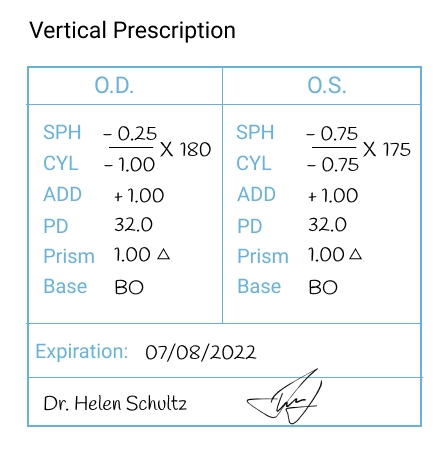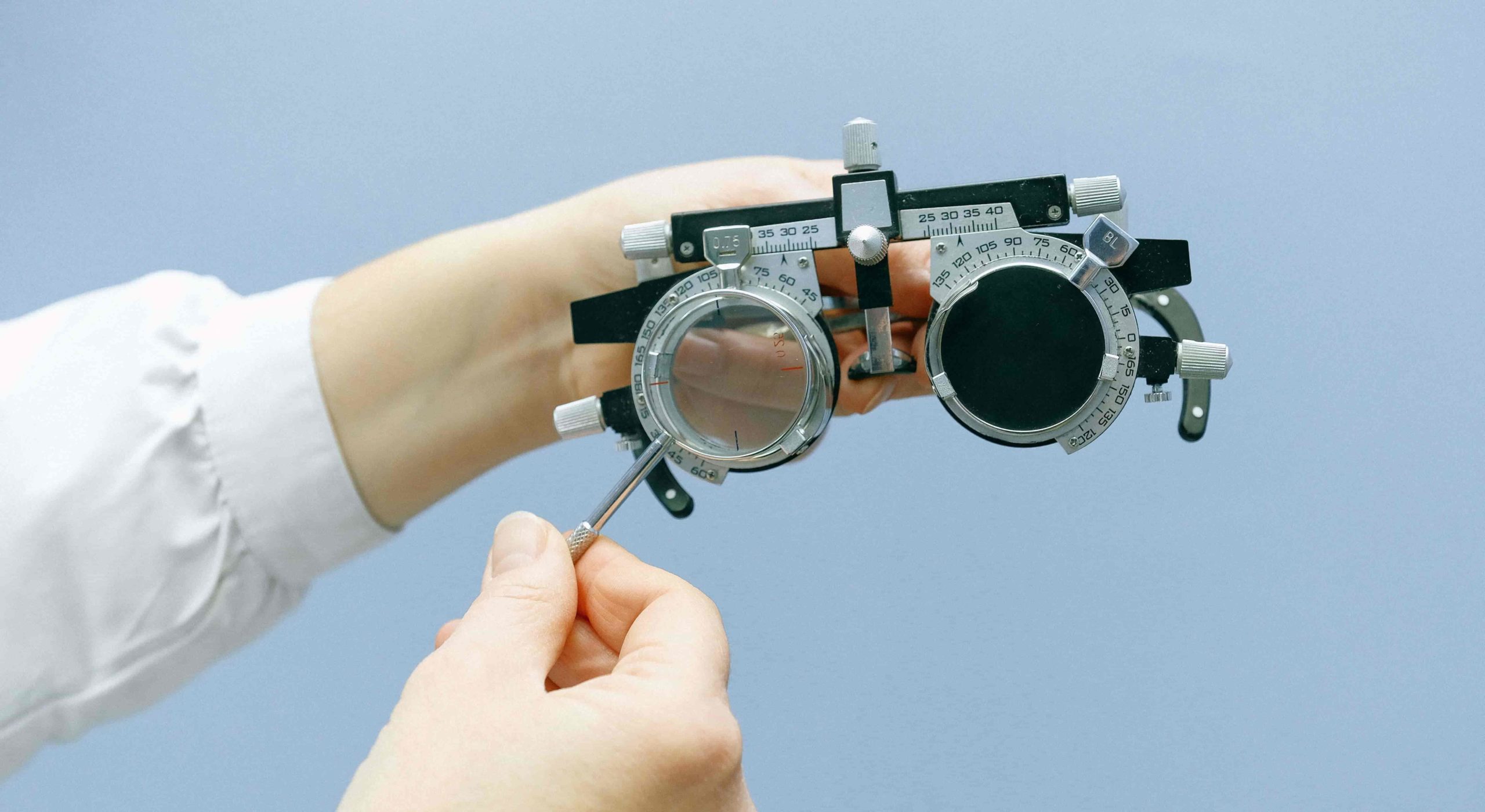How to read a glasses prescription?
What Does an Eyeglass Prescription Look Like?
The format of your glasses prescription will vary depending on the person that wrote it for you. Some are computerized, while others are hand-written.

Some will use a grid format, where boxes are filled in, while others will be written on a blank pad.

Most prescriptions are written from left to right, but you may also see a vertical prescription, which is written from top to bottom.

You’ll be able to identify if your prescription is for a bifocal or progressive lens if it contains an “add”, which stands for lens addition.
Some prescriptions also incorporate prism, in which case you’ll find both the amount of prism and the base on the prescription. Some components will be found on every glasses prescription, while others will only apply in certain cases.
What Do The Numbers On The Prescription Mean?
When you’re learning how to read a glasses prescription, you’ll need to understand each component. Here, we’ll break down each element into simple terms.
OD and OS
Most glasses prescription will include the terms OD and OS. These are abbreviations for the Latin words oculus dextrus and oculus sinister, respectively. OD means right eye and OS means left eye. You may also see the abbreviation OU, for oculus unitas, which means both eyes.
Sphere
The term sphere stands for the spherical part of your glasses prescription. If you are myopic, or nearsighted, this number will be negative. If you are hyperopic, or farsighted, this number will be preceded by a positive sign. Nearsighted individuals have more trouble with their distance vision while farsighted people have more problems seeing up close. The unit for this measurement is Diopters, so you’ll sometimes see a D after the value. Spherical values are reported in 0.25 Diopter increments, such as –2.25. Sometimes, the notation DS, for Diopters Sphere, will appear after the sphere value. This indicates there is no astigmatism. Another way this can be specified is by writing the word “sphere” after the spherical value.
Example: -2.25 DS or -2.25 sphereCylinder
Cylinder refers to the astigmatism portion of the glasses prescription. Some eye care professionals will report this number with a minus sign in front of it, while others will report it with a plus sign preceding it. Either way, this value refers to the amount of astigmatism you have. Astigmatism is often due to the shape of the cornea, where its form resembles a football, rather than a basketball. This value is reported in 0.25 Diopter increments, like the sphere value. The higher this number, the more astigmatism you have.
Example: -2.25-1.00x180If you do not have astigmatism, the cylinder field may be left blank. Sometimes, the notation DS, for Diopters Sphere, will appear after the sphere value. This indicates there is no astigmatism. Another way this can be specified is by writing the word “sphere” after the spherical value.

Axis
The axis refers to the astigmatism orientation. Every cylinder must have an accompanying axis. This specifies how to orient the cylinder in the lens. This number is preceded by an “x”, which means axis. The axis is a number between 1 and 180. If you have a glasses prescription with a negative cylinder value and another with a positive cylinder value, the axes will be 90 degrees apart but the prescription will be equivalent. Two prescriptions may look different due to the convention in which they are written, but they could actually be the same.
Example: -2.25-1.00x180 is equivalent to –2.25+1.00x090If you do not have astigmatism, the axis may be left blank. Sometimes, the notation DS, for Diopters Sphere, will appear after the sphere value. This indicates there is no astigmatism. Another way this can be specified is by writing the word “sphere” after the spherical value.
Prism
Some people require prismatic power to better align the image to their eyes. Prism helps with both vertical and horizontal eye alignment problems. This problem is relatively uncommon, but if you require prism you’ll see both the magnitude and the orientation specified on your glasses prescription. The value is reported in 0.25 Diopter increments. The orientation could be in one of four directions: base up (BU), base down (BD), base out (BO) or base in (BI).
Example: -2.25-1.00x180 prism: 2.00 BDAdd
The add power specifies an added reading prescription that can be put into a bifocal or progressive lens. This is most commonly used for people with presbyopia, which is a condition that develops in your forties where the eyes have difficulty focusing on near objects. Although add powers are most commonly used in presbyopes, they are occasionally used to help children or young adults to read more comfortably. An add power is reported in 0.25 Diopter increments, most commonly between 1.00 to 2.50, though you can see values above or below that. An add power is always positive. You may see a plus sign in front of the value, or it could be left off. Either way, it means the same thing.
Example: -2.25-1.00x180 add: +2.00PD
Sometimes the pupillary distance, or PD, is added to a glasses prescription. This refers to the distance between the two eyes, or more specifically the pupils, in millimeters. If this value is not on your prescription, you may measure it when you order glasses from us to ensure that your prescription glasses are centered appropriately over your eyes.
Example: -2.25DS PD: 63.0That is how to read a glasses prescription! You can now read it confidently and order prescription glasses from any optical retailer
